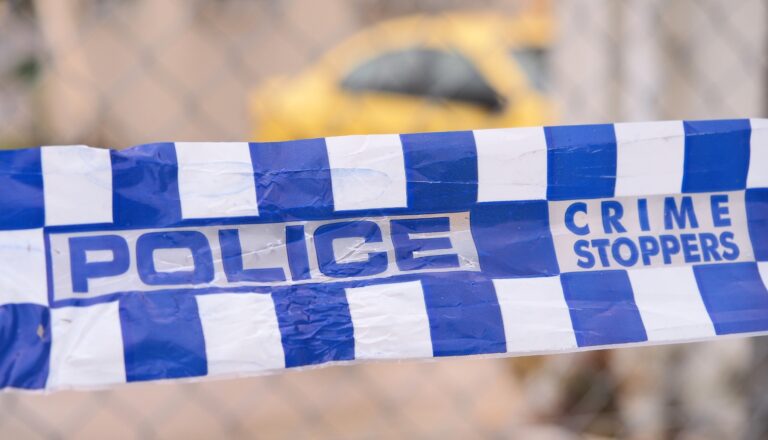
Charles Laseron: a renaissance man sadly out of season

Museums and antique shops have always fascinated me. Natural history has always fascinated me. These interests were fostered by my parents who were keen museum-goers, and, in the 1950s and early 60s, I was often taken to the Australian Museum (where I would later, briefly, be the chief guide) and the Museum of Applied Arts and Sciences (MAAS) on Harris Street Ultimo, which eventually moved down the road a little and became the Powerhouse.
Of the two museums, my parents were perhaps keenest on the MAAS, because they collected English Staffordshire figurines, and I recall that they bought the museum’s slim catalogue of the pottery and porcelain collections. Old pottery did not much interest me, so I was not to discover, until very recently, that the catalogue’s author was not just a remarkable sydneysider, but a true renaissance man who made a unique contribution to his city and to Australian science and connoisseurship.
I stumbled on him in a curious way. Sorting through my father’s effects after his death in 2002, I came upon a small military training booklet entitled Direction Finding by the Sun and Stars written by a Staff Sergeant Laseron. It had been published in Sydney in 1942, seemingly as a private venture. In just 48 pages, with simple, hand-drawn illustrations, it was an erudite guide to practical astronomy and military field navigation and included a description of a do-it-youself sun compass designed by the author.
Twelve years after I found the booklet, while googling for information on Reuben Hannam, the convict brickmaker on whose land-grant our Turrella home is built, I came across a Hannam who had been on Douglas Mawson’s 1911-13 South Pole expedition and associated, with was him, a Charles F. Laseron. Surely this could not be the same man as Staff Sergeant Charles F. Laseron?
It was, and with a few clicks, the story of an extraordinary life spilled down the screen.
Charles Laseron was born in 1887 in Wisconsin, USA, the third and youngest child of the Rev. David Laseron, an English clergyman of eastern German origin. The Laserons moved back to the UK in 1888, then migrated to Australia, reaching Sydney in 1891.
Things did not go well. In June 1892, at Redfern, in a railway carriage, the Rev. Laseron was shot in the back by a hideously drunk member of the NSW Parliament (who later went on to be the attorney-general of WA). He recovered, but thereafter suffered from depression, in spite of which the Anglican Church appointed him to Lithgow. Here young Charles was raised before being sent to St Andrew’s Cathedral School.
Laseron did not attend university, probably because of his family’s straitened circumstances. Instead, he enrolled at Sydney Technical College where he gained a diploma in geology. Just 19, he joined the staff of the Technological Museum – which became the Museum of Applied Arts and Sciences – as a collector, and published his first scientific paper (on the geology of the Shoalhaven district). He also began investigations in botany and paleontology.
In 1911 Laseron joined Mawson’s Antarctic expedition as taxidermist and biological collector, taking part in two long sledging journeys during which he made important discoveries in geology. Back in Sydney, he took over the museum’s geological collections, but in September 1914, just after the outbreak of World War One, he enlisted in the AIF.
Laseron’s first military career was brief. He was wounded on the second day of Gallipoli, put on a boat back to Sydney, and discharged in 1916. He returned to the museum and in 1926 was appointed officer-in-charge of a new venture into “applied arts” – meaning the application of design and decoration to everyday objects to make them aesthetically pleasing.
For someone whose training was in geology and natural history, Laseron took to this new field with alacrity. Within the museum, and publicly, he fought for an applied arts collection that was appropriately funded and housed. According to his entry in the National Dictionary of Biography: “Later developments at the old Ultimo power house and elsewhere in Sydney have realised part of Laseron’s vision, but with little acknowledgement to a man out of season. Beyond setting up the New South Wales Applied Art Trust to promote the cause, he could make no headway and, frustrated by attitudes within the museum, resigned in 1929.”
Laseron then set up as an antique dealer (his shop was at 19 Castlereagh Street) and an auctioneer of books, coins and stamps, making a success of this even in the hard years of the depression. With the outbreak of the Second World War, he re-enlisted. For some reason, he was never commissioned, serving as a navigation instructor in his First World War rank of staff sergeant until 1944 when he was discharged because of bronchitis and heart trouble.
Post-war, Laseron never went back to antique-dealing, working as a clerk with the Colonial Sugar Refining Company. But you can’t keep an instinctive man of science down, and he took to writing and amateur natural history. In 1947, he published South With Mawson, an account of the 1911-13 expedition.
Laseron’s Antarctic pants are in the collection of the Powerhouse Museum, but a far as I can tell, absolutely nothing in Sydney is named in honour of him, which is a great shame, really.









